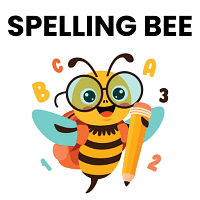Class 4 Exam > Class 4 Questions > Why was there lot of smoke and noise at railw...
Start Learning for Free
Why was there lot of smoke and noise at railway crossing?
Most Upvoted Answer
Why was there lot of smoke and noise at railway crossing?
Introduction:
At railway crossings, it is common to see smoke and hear noise. This can be attributed to several factors. Let's explore the reasons behind the presence of smoke and noise at railway crossings.
Reasons for Smoke:
There are a few reasons why smoke can be observed at railway crossings:
1. Train Brakes: Trains use air brakes to slow down or stop. When a train approaches a railway crossing, the brakes are applied, resulting in the release of smoke. This smoke is caused by the friction between the brake pads and the wheels. The smoke may appear more prominent if the train is traveling at high speeds or if the brakes are being applied abruptly.
2. Train Engines: Train engines, especially those powered by diesel or steam, emit smoke as a byproduct of combustion. This smoke is released from the exhaust stacks of the locomotives. At railway crossings, as trains slow down or stop, the smoke emitted by the engines becomes more visible.
Reasons for Noise:
Various factors contribute to the noise experienced at railway crossings:
1. Train Whistle: Trains are equipped with whistles or horns to alert pedestrians and motorists of their approach. As trains approach a railway crossing, the whistle is blown to warn people of the incoming train. This creates a loud noise that can be heard from a distance.
2. Train Wheels: The wheels of a train rolling on the tracks produce a constant noise. The sound is generated due to the interaction between the train wheels and the rail tracks. The noise can be amplified when the train is traveling at high speeds or when the tracks are not properly maintained.
3. Gate Bells and Alarms: Railway crossings are equipped with gates and alarms to prevent accidents. When a train is approaching, the gates are lowered, and the alarms are activated. The mechanism responsible for lowering the gates and activating the alarms can create additional noise.
Conclusion:
In conclusion, the presence of smoke and noise at railway crossings is a result of various factors. Smoke is generated due to train brakes and engines, while noise is produced by train whistles, wheels, and gate mechanisms. These elements serve as necessary safety measures to warn and alert pedestrians and motorists of an approaching train.
At railway crossings, it is common to see smoke and hear noise. This can be attributed to several factors. Let's explore the reasons behind the presence of smoke and noise at railway crossings.
Reasons for Smoke:
There are a few reasons why smoke can be observed at railway crossings:
1. Train Brakes: Trains use air brakes to slow down or stop. When a train approaches a railway crossing, the brakes are applied, resulting in the release of smoke. This smoke is caused by the friction between the brake pads and the wheels. The smoke may appear more prominent if the train is traveling at high speeds or if the brakes are being applied abruptly.
2. Train Engines: Train engines, especially those powered by diesel or steam, emit smoke as a byproduct of combustion. This smoke is released from the exhaust stacks of the locomotives. At railway crossings, as trains slow down or stop, the smoke emitted by the engines becomes more visible.
Reasons for Noise:
Various factors contribute to the noise experienced at railway crossings:
1. Train Whistle: Trains are equipped with whistles or horns to alert pedestrians and motorists of their approach. As trains approach a railway crossing, the whistle is blown to warn people of the incoming train. This creates a loud noise that can be heard from a distance.
2. Train Wheels: The wheels of a train rolling on the tracks produce a constant noise. The sound is generated due to the interaction between the train wheels and the rail tracks. The noise can be amplified when the train is traveling at high speeds or when the tracks are not properly maintained.
3. Gate Bells and Alarms: Railway crossings are equipped with gates and alarms to prevent accidents. When a train is approaching, the gates are lowered, and the alarms are activated. The mechanism responsible for lowering the gates and activating the alarms can create additional noise.
Conclusion:
In conclusion, the presence of smoke and noise at railway crossings is a result of various factors. Smoke is generated due to train brakes and engines, while noise is produced by train whistles, wheels, and gate mechanisms. These elements serve as necessary safety measures to warn and alert pedestrians and motorists of an approaching train.
Attention Class 4 Students!
To make sure you are not studying endlessly, EduRev has designed Class 4 study material, with Structured Courses, Videos, & Test Series. Plus get personalized analysis, doubt solving and improvement plans to achieve a great score in Class 4.

|
Explore Courses for Class 4 exam
|

|
Similar Class 4 Doubts
Why was there lot of smoke and noise at railway crossing?
Question Description
Why was there lot of smoke and noise at railway crossing? for Class 4 2024 is part of Class 4 preparation. The Question and answers have been prepared according to the Class 4 exam syllabus. Information about Why was there lot of smoke and noise at railway crossing? covers all topics & solutions for Class 4 2024 Exam. Find important definitions, questions, meanings, examples, exercises and tests below for Why was there lot of smoke and noise at railway crossing?.
Why was there lot of smoke and noise at railway crossing? for Class 4 2024 is part of Class 4 preparation. The Question and answers have been prepared according to the Class 4 exam syllabus. Information about Why was there lot of smoke and noise at railway crossing? covers all topics & solutions for Class 4 2024 Exam. Find important definitions, questions, meanings, examples, exercises and tests below for Why was there lot of smoke and noise at railway crossing?.
Solutions for Why was there lot of smoke and noise at railway crossing? in English & in Hindi are available as part of our courses for Class 4.
Download more important topics, notes, lectures and mock test series for Class 4 Exam by signing up for free.
Here you can find the meaning of Why was there lot of smoke and noise at railway crossing? defined & explained in the simplest way possible. Besides giving the explanation of
Why was there lot of smoke and noise at railway crossing?, a detailed solution for Why was there lot of smoke and noise at railway crossing? has been provided alongside types of Why was there lot of smoke and noise at railway crossing? theory, EduRev gives you an
ample number of questions to practice Why was there lot of smoke and noise at railway crossing? tests, examples and also practice Class 4 tests.

|
Explore Courses for Class 4 exam
|

|
Suggested Free Tests
Signup for Free!
Signup to see your scores go up within 7 days! Learn & Practice with 1000+ FREE Notes, Videos & Tests.

























